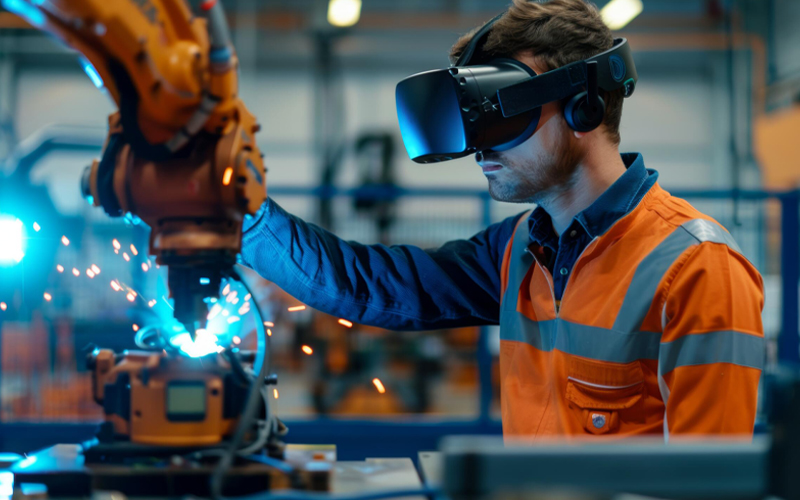In the constantly evolving landscape of Industry 4.0, the Internet of Things (IoT) is now a pivotal force that is reshaping the manufacturing sector. IoT has transformed how industries utilise data, communicate and operate. In fact, it has brought about another movement, the Industrial Internet of Things (IIoT).
The manufacturing sector is constantly under pressure to boost productivity and efficiency while reducing costs, and IoT has emerged as a promising solution to these continuous challenges. In fact, even in 2019, a Deloitte survey of executives associated with the manufacturing sector reported that 86 per cent believed that smart factory initiatives would drive the manufacturing sector over the next five years. Another industrial report of 2016 predicted that by 2025, over 75 billion devices would be connected via IoT technology. From optimising processes to improving quality control, enhancing productivity, enabling predictive maintenance and streamlining management, IoT technology is revolutionising the way factories operate. The value of IoT in the manufacturing sector is expected to reach USD 200.3 billion by 2030, up by a CAGR of 13.9 per cent from 2021.
IoT involves a network of sensor-loaded physical objects that collect and exchange data, effectively promoting connectivity among various machines, systems and devices. and that enables manufacturers to reduce downtime and optimise production processes. New revenue and business models can also be developed using all the information and capabilities involved. Here are a few ways that IoT works to favour the manufacturing sector.
Role of IoT in streamlining the production process
Using IoT, manufacturers can gather data from many equipment and machines in the factory and that helps them identify areas for improvement and trends.
IoT enables manufacturers to monitor and exchange production status in real time, enabling collaboration between the many parts of the production process. The production process can be easily replicated and production-related problems can be resolved on time.
Machines and equipment can connect to the internet and that allows manufacturers to monitor and control them remotely. Harnessing this data enables efficiency to be increased and downtime to be reduced.
The production process can be better coordinated and streamlined since the machines can communicate with each other.
By being always connected and informed, manufacturers can reduce unplanned downtime and increase productivity.
IoT allows entire production lines to be standardised and that makes it easier to optimise operations across the whole plant.
IoT enables predictive maintenance
Since IoT technology enables machines and devices to be connected to the internet, all data collected can be analysed in real-time. Potential issues can be successfully identified and corrected so that disruptions can be minimised.
IoT-enabled predictive maintenance sensors can thereby reduce the cost of poor quality (COPQ) and improve both efficiency and safety. These wireless sensors calculate or measure the temperature, vibrations, acceleration, and sound and displacement frequencies to identify if the machines are operating normally or not. They can reliably predict if a machine is operating under dangerous conditions.
Since IoT-enabled sensors measure temperatures and vibrations accurately, any variation from the standard predicts a potential or existing problem. Such sensors are used in industrial boilers, food and liquid storage units, vehicles and conveyors, motors and compressors, robotic equipment and various others.
Further, with the use of digital twins, manufacturers can digitally recreate production lines where there are any bottlenecks, and identify and simulate corrections digitally before executing the physical corrections. Modifications and customisations of products can first be tested digitally too.
Asset and location tracking
IoT sensors help manufacturers track assets, especially those that are moved around. By knowing where assets are, both time and costs can be saved.
Optimising quality control
Quality management requires monitoring of many parameters and maintaining consistent product quality is of paramount importance in manufacturing. Temperature and air quality along with humidity play a big role in the quality of many products. Instead of tracking these parameters manually, IoT has now made it possible for manufacturers to keep track of the numbers continuously and more accurately. If any deviation from optimal conditions occurs, the system can automatically trigger alerts or adjustments, ensuring that products meet stringent quality standards. This enables manufacturers to prevent material degradation, microbial growth, high energy consumption, inaccurate results and manage any drying issues.
IoT in warehouse management
Logistics or the management of products, materials and equipment is one of the most important aspects of the manufacturing sector. While manufacturers are investing millions of dollars to manage their logistics better, it is because of the IoT sensors that manufacturers are able to stay ahead of the game and be prepared for almost any untoward incident. Some of the biggest challenges in warehouse management include the large volumes of products that need to be stored and shipped, the speed of processing orders, managing and tracking inventory efficiently and the rising costs of transportation.
IoT in safety management
As part of an integrated safety system, some manufacturers have started utilising wearable IoT technology. Employee posture, noise levels, gas leaks if any and other working conditions on the shop floor can be easily monitored using IoT technology and rectified when needed. This can help improve safety conditions at a manufacturing plant.
Quality and security of data
At the end of the day, it must be understood that the real value of IoT can be realised only when the data is secure and manufacturers have complete control over it. The IoT ecosystem must allow different devices and systems to be able to communicate with each other so that there is smooth movement of information back and forth. Progressive manufacturers should pay focused attention to IoT devices and their uses while strategizing about how to stay ahead of the competition.
* For organizations on the digital transformation journey, agility is key in responding to a rapidly changing technology and business landscape. Now more than ever, it is crucial to deliver and exceed on organizational expectations with a robust digital mindset backed by innovation. Enabling businesses to sense, learn, respond, and evolve like a living organism, will be imperative for business excellence going forward. A comprehensive, yet modular suite of services is doing exactly that. Equipping organizations with intuitive decision-making automatically at scale, actionable insights based on real-time solutions, anytime/anywhere experience, and in-depth data visibility across functions leading to hyper-productivity, Live Enterprise is building connected organizations that are innovating collaboratively for the future.







